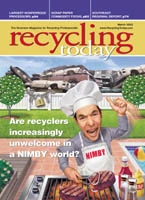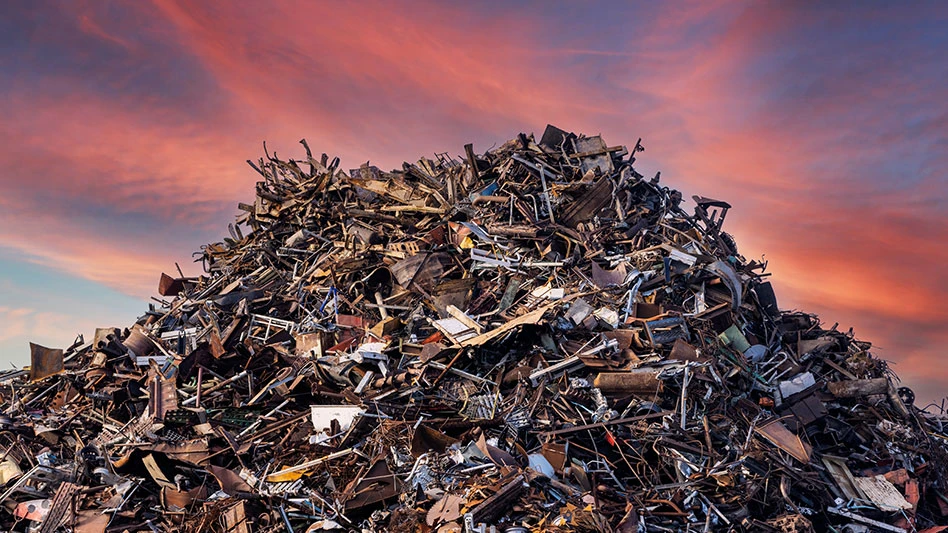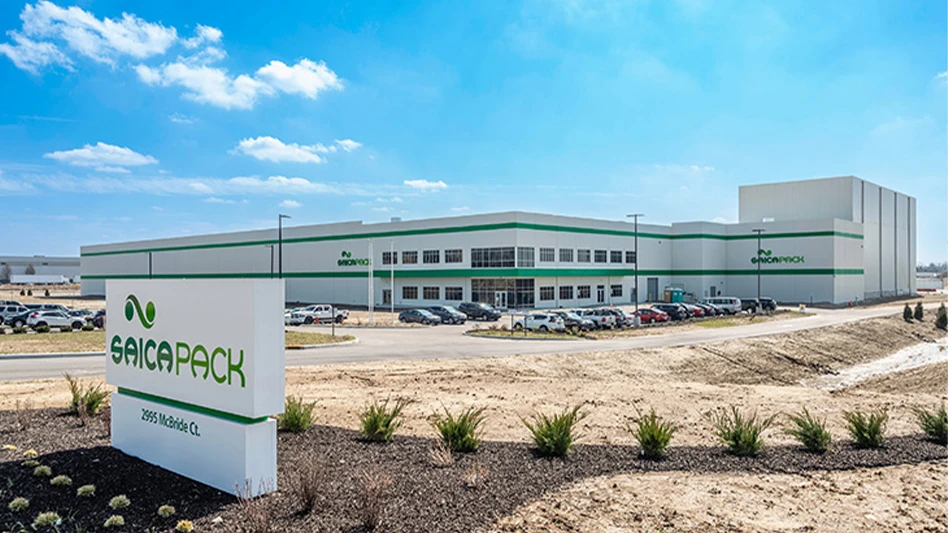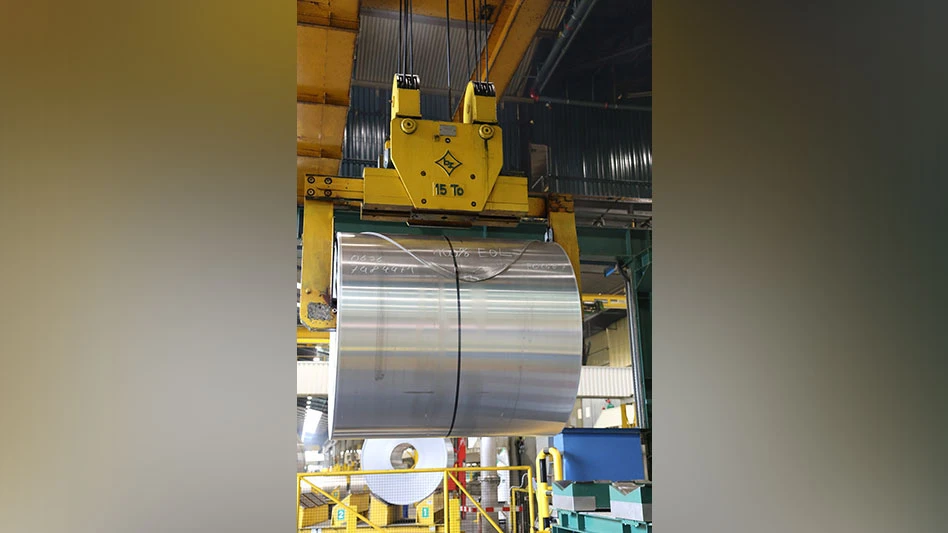END MARKETS COME FIRST
Owning the best equipment is helpful, but the best processing techniques in the world can’t help a C&D recycler who doesn’t have end markets. That was the message delivered by Michael Gross, marketing manager for Zanker Road Resource Management to attendees of the C&D World conference.
Members of the Construction Materials Recycling Association (CMRA) assembled in Fort Lauderdale, Fla., in late January for the C&D World conference. Gross is a member of the CMRA board of directors.
Zanker Road Resource Management, San Jose, Calif., developed its operations, Gross noted, as a way to extend the life of its landfills, and to help communities reach mandated recycling/landfill diversion goals.
In 1985, planners at the city of San Jose required Zanker to recycle wood waste as part of its operating permit, said Gross. The company has since focused on accepting, processing and marketing scrap wood. Because of the large amount of wood waste coming in, "our product sales have had to be more efficient and creative," he told attendees. The company now also accepts mixed C&D debris as well as pure demolition debris.
At its two recycling facilities, the company uses workers at picking stations, trommels, air knives and other sorting and processing techniques to create several marketable products.
Breaking down his company’s current markets, Gross revealed that 38 percent of the incoming mixed material leaves the facility as wood suitable for hog fuel markets; slightly less than 30 percent is used as soil suitable for landfill cover, berms and other civil engineering applications; 9 percent is suitable to sell as a soil amendment; and 4 percent as roadside landscaping mulch. Another 10 percent of material is concrete, asphalt and block sold as base and drainage rock. Metals, meanwhile, make up 5 percent of what comes in, with tin, steel and aluminum making up the major portion of that stream. Only from 5 percent to 9 percent of what comes in is trash that needs to be landfilled.
Gross remarked that prices for end markets can be disappointing, but just making sure the end markets are there is important to avoid stockpiling problems. "Right now, I have about 60,000 tons of base rock on site waiting for a home," he commented.
Currently, Gross is getting an average of $4 per ton for hog fuel—his largest market. He noted that he would like to further develop his roadside mulch market, which can fetch up to $18 per ton.
Tipping fees have to be high enough to cover costs but low enough to attract customers.
Zanker Road Resource Management has a two-person marketing staff, said Gross. One concentrates on keeping material flowing in while the other works to develop end markets for materials.
The company has a base of some 1,200 customers who tip there, said Gross. In the most recent 12-month period, Zanker processed more than 390,000 tons of materials and obtained an average 91 percent recovery rate.
| RECYCLERS DECRY WASHINGTON RULE |
|
The state of Washington has put in force a regulation that some fear will cause a substantial amount of demolition debris to be sent away from C&D recycling centers and toward landfills. Rule 173-350 of the Washington Administrative Code bans building debris with lead-based paint on it above 0.06 percent by weight from being sorted and processed into a hog fuel. According to William Turley, executive director of the Construction Materials Recycling Association (CMRA), the best current technology to detect lead in a load of debris has a precision level of plus or minus 0.05 percent, so any detection means the material cannot be used for fuel. Since this is the main market for that type of wood in the region, the result of the rule could be that virtually any load from a pre-1978 building has no other disposal option except going to a landfill. The intentions were good on this rule, says one local recycler. The rule was created to remove stack emissions of lead at boilers. But critics of the rule say the trace amounts of lead left in the hog fuel stream were already being burned up in the stack anyway, so there were no harmful emissions. According to Turley and CMRA sources in Washington, the only way to change the rule will be for the boiler operators to stand up before the legislature or regulatory board and say they are aware the material has lead in it, but that it is not a problem. This is viewed as unlikely. C&D recyclers can still make alternative daily landfill cover (ADC) out of pre-1978 building debris. However, they still have to pay the landfill to use the material, and after processing costs, the economics for making ADC do not always pan out. It is usually cheaper just to send the loads directly to the landfill. A demolition contractor in Washington says the rule has an added effect of raising lead to about the same level as asbestos, as least as far as reporting. "We have to give a contaminant inspection report to a processing center before we can dump material there, [just as with] asbestos," he says. |
Seattle Considers Flow Control
The city of Seattle is considering the implementation of a "flow control" ordinance, according to a source in that region.
Recyclers in the Pacific Northwest have reported that the rule being considered will require all C&D waste and recycling bins and dumpsters containing more than 10 percent "non-recyclables" to be under the city’s jurisdiction. As such, the material would be subject to a host fee that will provide added revenue for the city and potential control of the material to city-designated solid waste companies.
Several current and potential C&D recyclers in the area fear that the larger, established solid waste companies are behind the move.
Seattle currently has a thriving C&D recycling infrastructure that diverts thousands of tons of material away from the waste stream, according to William Turley, executive director of the Construction Materials Recycling Association (CMRA).
In other parts of the country, flow control-type ordinances often bring a large part of the mixed C&D material back into the control of the largest haulers, says Turley.
According to the Seattle area source, there are so far no details on how the 10 percent residual rate will be determined.
R. W. Beck Acquires Texas Firm
Management consulting and engineering firm R. W. Beck, Inc., Seattle, has announced the acquisition of Austin, Texas-based consulting firm Reed, Stowe & Yanke LLC (RS&Y). The firm offers water, wastewater, storm water, electric, gas and solid waste industry consulting.
Effective in March, RS&Y, a 12-person firm with a reported $1.5 million in billings for 2002, will be a division of R. W. Beck, a 61-year-old management consulting and engineering firm that concentrates on industry and public agencies that provide power, water/wastewater/ stormwater, solid waste and telecommunications services.
"RS&Y’s consulting experience fits well and will complement R. W. Beck’s services across the country and internationally," says Nicholas P. Guarriello, president and CEO of R. W. Beck. "Expanding and growing the consulting portion of our infrastructure practice will enable us to meet client needs and align this area more with our capabilities that already exist to serve the energy industry."
RS&Y Directors Jack E. Stowe, Jr., and Dave Yanke concur that the two businesses will mutually benefit one another. "One of the main benefits to clients will include a broader line of financial and operations services," says Yanke.
| CONTRACTOR HITS 75% TARGET |
|
W.G. Clark Construction Co., Seattle, has been named as the newest member of the Construction Works program run by King County, Wash. The program provides assistance and recognition to builders who recycle materials and use recycled-content products. W.G. Clark was recognized for its work as the general contractor on King County’s new regional emergency services center, which fields 911 calls. The building was constructed meeting LEED green building certification standards established by government agencies and environmental groups. To meet the Construction Works standards, W.G. Clark had to certify that it recycled 75 percent of its job site debris, including concrete, drywall, metals, wood, plastic film and cardboard. The company estimates that it saved 20 percent in hauling and disposal fees by recycling at such a high rate. Additionally, the company used excavated dirt as backfill, salvaged metal as reinforcing steel and advised its subcontractors and suppliers of its waste reduction and recycling strategies, providing tips on how they can comply. Contractors or business owners planning a building project in the Seattle area who want more information on the Construction Works can contact Katie Spataro in King County at Katie.spataro@metrokc.gov or, within the Seattle city limits, Karen Price at kareng@resourceventure.org. |
Get curated news on YOUR industry.
Enter your email to receive our newsletters.

Explore the March 2003 Issue
Check out more from this issue and find your next story to read.
Latest from Recycling Today
- Steel Dynamics cites favorable conditions in Q1
- Hydro starts up construction in Spain
- Green Cubes unveils forklift battery line
- Rebar association points to trade turmoil
- LumiCup offers single-use plastic alternative
- European project yields recycled-content ABS
- ICM to host colocated events in Shanghai
- Astera runs into NIMBY concerns in Colorado





